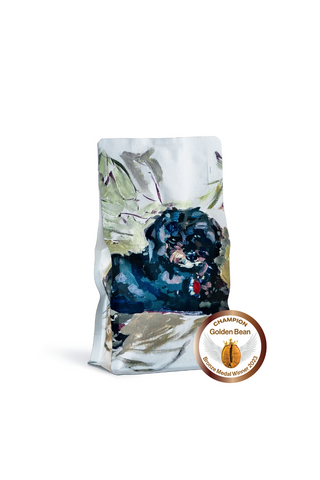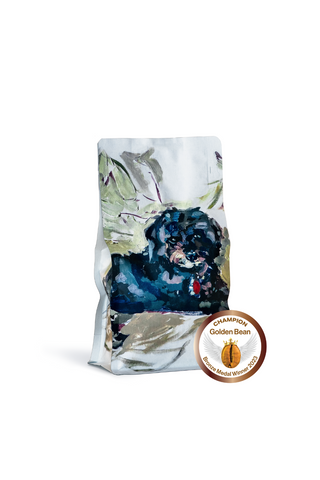
What is fresh coffee?
Coffee freshness dictates the entire coffee experience, from the time beans are harvested to the moment they’re brewed. But how exactly do we define freshness in relation to coffee, and how does coffee freshness impact your daily coffee ritual?
Table of Contents

Defining coffee freshness
Freshness in coffee refers to how recently the coffee beans were roasted and ground. Freshly roasted coffee beans contain volatile compounds, enhancing their distinctive flavors and aromas. As coffee ages, these compounds start to break down, and the coffee loses its freshness and vibrancy. So, the fresher the coffee, the better it tastes.

What happens to a coffee bean that’s been roasted?
Let’s take a minute to talk science. In the roasting process, several chemical and physical changes transform the coffee bean from a green, raw seed into the flavorful and aromatic coffee bean we brew every day.
The Maillard reaction is a chemical reaction that occurs between amino acids and sugars during the roasting process. It results in the browning of the coffee bean and the creation of a wide range of flavors and aromas, including those associated with sweetness and complexity. It’s the same process that steak undergoes when it’s seared, or bread when it’s toasted. This reaction, alongside the caramelization of sugars in the bean, results in the flavors we associate with coffee.
As beans roast, they also release carbon dioxide. This process, known as degassing, continues after roasting. This is why freshly roasted beans are usually packaged with one-way valves, allowing CO2 to escape with letting oxygen in.

How long should beans rest after roasting?
Traditionally, coffee roasters often advocated for a brief resting period of a few days to allow freshly roasted beans to settle before brewing. This was believed to release residual gases and help stabilize flavors. However, with the rise of “third-wave” coffee in recent years, there’s been a shift towards longer resting periods.
Modern trends suggest resting coffee beans for a week to several weeks, or even months, after roasting. This extended resting period is believed to enhance flavor complexity and a smoother, more balanced cup of coffee.
Ultimately, the perfect resting period varies based on factors such as roast level, personal preference, and bean origin. Experimentation and tasting will determine the ideal resting time for each batch of freshly roasted coffee beans.

Can coffee go bad?
Absolutely! Over time, coffee can lose its freshness and flavor. While coffee beans don't spoil like perishable food items, they can become stale, resulting in a less satisfying cup. Exposure to air, moisture, and light can speed up this process. Ground coffee is particularly vulnerable because of its increased surface area. To preserve its freshness, store coffee in a sealed container in a cool, dark place. However, it's best to use coffee within a reasonable timeframe to enjoy its full flavor and aroma.
How to determine if coffee is fresh or old
To gauge coffee freshness, rely on your senses. Fresh beans have a rich aroma, while stale ones lack fragrance. Visually, fresh beans are shiny; stale ones appear dry. When brewed, fresh coffee is bold and flavorful, while stale coffee tastes dull or bitter. Feel the texture of ground coffee: fresh grounds are smooth, while stale ones are coarse. Check the roasting date on the package; freshest within weeks of roasting.
To put it all simply: fresh coffee smells the best, looks the best, and most importantly, tastes the best. Don’t settle for anything less than fresh.



















